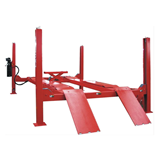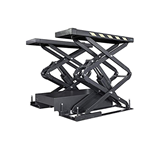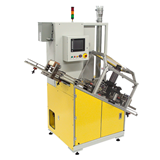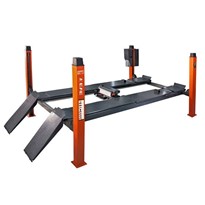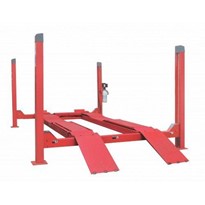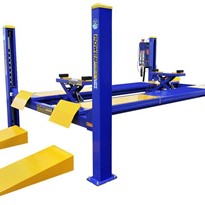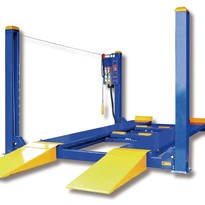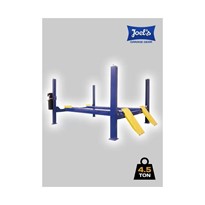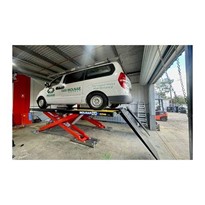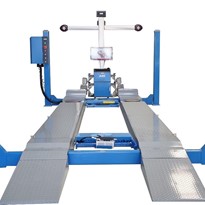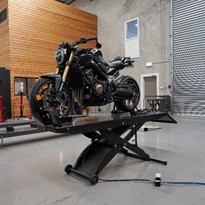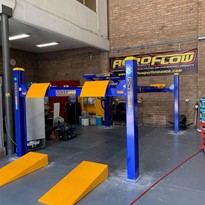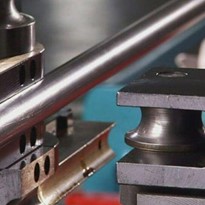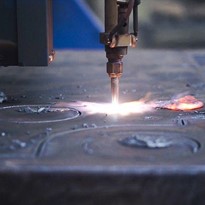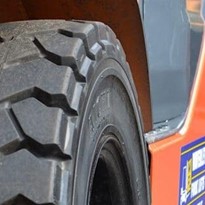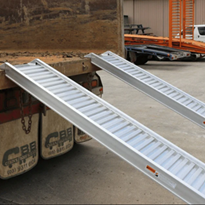What Are Wheel Alignment Hoist?
A wheel alignment hoist is an automotive tool used to adjust the castor, toe and camber on a vehicle to align the car. It can also be used for other purposes such as changing tyres, inspecting brakes, checking shock absorbers, and general servicing.
An alignment hoist consists of four posts which are held together by a front and rear cross member and two runways. They have two slip plates at the rear of the runways, and moveable infill plates at the front with turntables for the front wheels to sit on. They may also come with rolling jacks which allows the technician to lift the vehicle up off the runway if any suspension work needs to be done. An alignment hoist could also be a scissor lift, which takes up less floor space and comes in a low profile version to allow lowered vehicles to drive on to the runways.
Why Are Wheel Alignment Hoists Important?
Wheel alignment hoists used together with an alignment machine ensures that your wheels are accurately aligned, improving both the performance and longevity of your tyres. Wheels often become misaligned by hitting potholes, bumps, kerbs, driving on uneven surfaces and through general wear and tear. It is therefore essential to maintain accurate alignment of your wheels, to ensure their quality and performance remains optimal.
Additionally, if your vehicle isn’t properly aligned, it can cause excessive tyre wear and the vehicle pulling left or right. If the steering wheel is off centre this may lead to premature wear of parts such as ball joints and tie rods. Ultimately, having your vehicle’s suspension system aligned with a wheel alignment hoist will help keep your car running safely and efficiently for many years to come!
How to Choose the Right Hoist for Wheel Alignment
Performing a wheel alignment is an important part of any vehicle maintenance schedule. For the highest level of accuracy and safety, it is essential to have the right hoist for the job. Consider these criterias before purchasing so that you can rest assure that you have chosen a reliable hoist for all your wheel alignment needs! But with so many different hoists on the market, how do you know which suits your needs?
Capacity and Size
Important factors to consider when selecting a hoist for a wheel alignment includes vehicle capacity and size, as well as facility layout and available space. You need to ensure that the hoist can handle the weight and dimensions of most vehicle’s wheel base length, as well as any additional equipment or tools that might be needed during an alignment job. When selecting, consider the maximum lift capacity and total platform size. Your choice of four post or scissor lift may rely on the layout of your facility.
Ease of Use
Another important factor to consider is the ease of use. You want to ensure that you select a hoist with user-friendly features such as adjustable height settings, intuitive controls, and automatic shutoff in an emergency.
You should also check that it has sufficient clearance between the platform and crossbars so that technicians can easily access all four wheels without worrying about hitting their heads or bending over too far. It will help ensure a smooth and efficient process during each wheel alignment job.
Safety Features
Last but not least, make sure that you select a hoist that comes with all necessary safety features, such as an overload protection system, non-slip pads on the platform, and easy-to-read control panels with clearly labelled buttons or levers.
It’s also important to choose one that meets all applicable industry standards to ensure optimal performance and prevent accidents or injuries caused by faulty equipment.
How Do You Use A Wheel Alignment Hoist?
Using a wheel alignment hoist is relatively straight forward but requires patience and attention to detail.
- First, drive the vehicle onto the runways of the hoist, stop short of the front turntables and leave vehicle in neutral.
- Next, roll vehicle onto the front turntables and remove securing pins from turntables.
- Next, put wheel chocks on rear tyres to stop it rolling forward or backwards, and release securing pins from rear slip plates.
- Finally, raise the hoist and make sure that you stop the hoist onto its first lock to ensure hoist is level.
Tips for Using a Wheel Alignment Hoist Safely and Effectively
The vehicle and its hoist must be handled with care, and without proper instruction, it’s easy to make mistakes that can lead to costly damage or even injury. To ensure your safety and the success of your project, here are some tips for using a wheel alignment hoist. With these tips in mind, working with a wheel alignment hoist will become simpler and easier than ever before!
Read the Owner's Manual First
Before you begin any work on your vehicle, read the owner’s manual for the vehicle and the wheel alignment hoist you’re using. It will provide detailed instructions on safely and properly using the equipment. Ensure you understand the instructions before attempting any work on your vehicle—otherwise, you risk serious injury or property damage.
Don’t Exceed Capacity Limits
It’s important that when using a wheel alignment hoist, you never exceed its maximum capacity. The weight limit should be listed in either the owner’s manual or on the label affixed to the auto lift itself; if there isn’t one provided, consult your supplier or manufacturer for advice about how much weight it can safely support.
Choose Automatic Safety Locks
Automatic safety locks are essential components of any wheel alignment hoist; ensure that the hoist is resting on mechanical locks before beginning your wheel alignment service.
Make sure that any auto lift you purchase comes equipped with automatic and manual safety locks; this will give you maximum protection whilst using your alignment lift.
Final Thoughts
Wheel alignment hoists are essential for any mechanic to properly maintain their customer vehicles. By allowing mechanics to inspect and adjust suspension systems quickly and easily without needing to jack up each wheel separately, these tools make alignment services efficient with maximum safety!
Whether you’re an experienced mechanic or just starting as an automotive technician, having access to a quality wheel alignment hoist will prove invaluable in helping you get the job done right!
To purchase a wheel alignment hoist, contact us today.
About TuffLift
When purchasing a hoist, it is important that you have peace of mind and that you are dealing with a company that has been operating for nearly 30 years. Tufflift is a leading international hoist manufacturing and distribution company based in Australia with over 60 years of combined experience in sales, installation, and service.
We pride ourselves on our quality, product range, and customer service to ensure you choose the right hoist for your requirements.
All our hoists come with a comprehensive step-by-step installation guide that allows easy assembly by one person.
Tufflift also offers an installation service in most states. Contact our team to get assistance in helping you arrange installation.
Frequently Asked Questions
Can You Do an Alignment on a 2-Post Lift?
Yes, you can do an alignment on a two-post lift. This lift has the necessary features to complete an alignment job, including adjustable arm pads and height extensions. A car hoist is designed to carry up to 4.5 tons of weight without shifting or flexing, ensuring your vehicle is safely and securely lifted during the alignment process. With this reliable lifting capacity, technicians can accurately adjust settings and ensure the wheels are optimally aligned for the best performance and safety possible.
Can I Do Wheel Alignment Myself?
Wheel alignment requires special tools, knowledge and expertise to ensure your vehicle’s safety and optimal performance. However, with the right set of skills, proper tools, and a clear understanding of how they work together, you can perform an accurate wheel alignment for maximum performance and driver safety.
How Do Slip Plates Work?
Slip plates are an important tool used in the alignment process. Two slip plates are mounted into the rear of each platform. These plates act as a reference point and help technicians accurately measure and adjust the rear wheels’ camber, toe, and caster while still attached to the vehicle and suspended by a hoist. By accurately measuring these parameters with slip plates, technicians can make minor adjustments to ensure your wheels are properly aligned for optimum performance and safety.





-160x160-state_article-rel-cat.png)



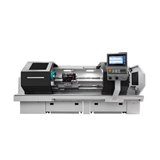





-160x160-state_article-rel-cat.png)

-160x160-state_article-rel-cat.png)
